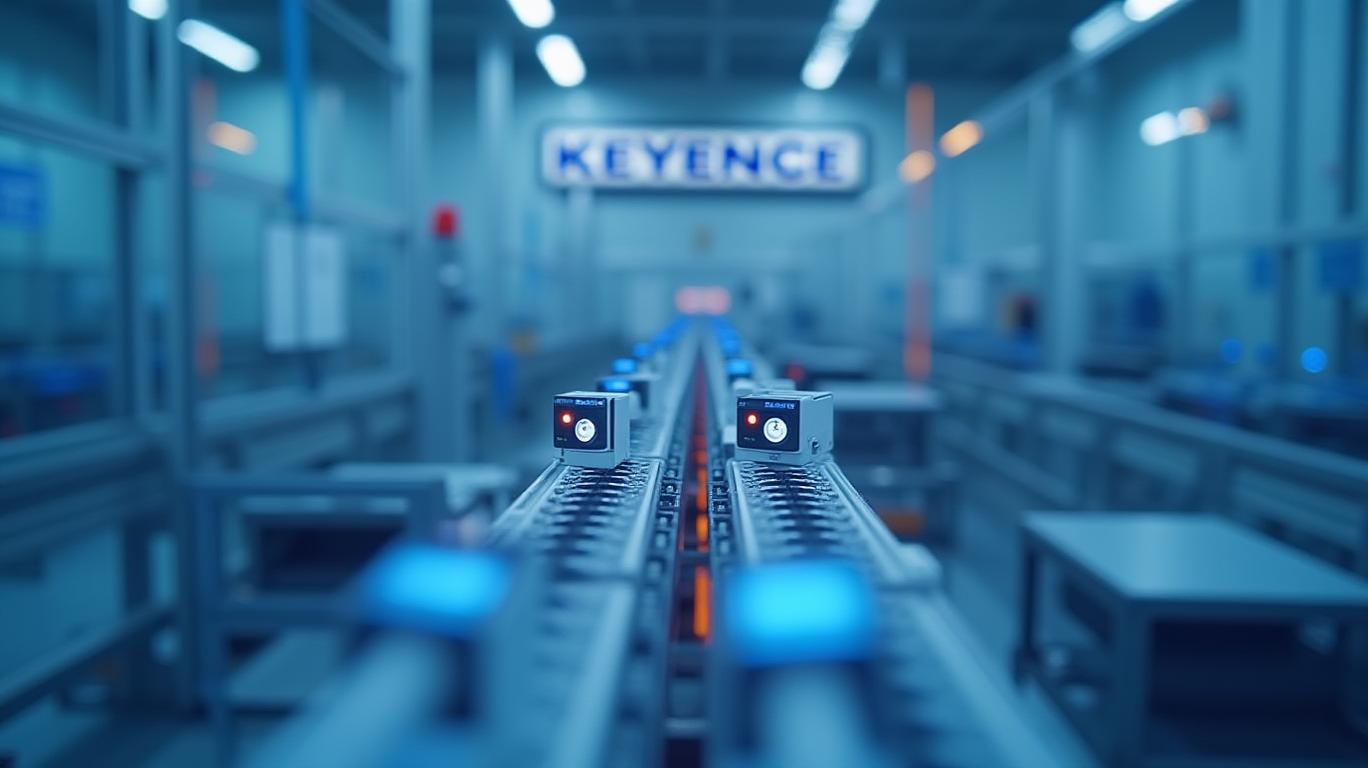AInvest Newsletter
Daily stocks & crypto headlines, free to your inbox
The Tokyo-based automation giant Keyence Corporation reported its fiscal year 2025 results on April 25, revealing a complex
of regional disparities that could redefine its growth trajectory. While net sales rose 9.5% to ¥1.06 trillion, the miss against analyst expectations highlights vulnerabilities in Europe and Japan—marking a pivotal moment for the firm’s long-term strategy.
Keyence’s April 25 earnings announcement underscored a familiar paradox: global automation demand remains robust, but regional dynamics are increasingly divergent. The ¥1.06 trillion in annual revenue—up from ¥968 billion the previous year—was overshadowed by a 1.5% shortfall compared to forecasts. Analysts at Simply Wall St noted the underperformance stemmed from a 6.5% sales decline in Europe and slower-than-expected growth in Japan, where sales rose just 8% amid hiring freezes.
The company’s profit margins held steady at 38%, a testament to its pricing power, but Morningstar analysts warned that revised regional forecasts could pressure future valuations. “European sales estimates have been slashed by 18% to ¥154 billion,” said the research firm in a April 25 note, “while Japan’s growth projections were cut to 8% from 10% due to a pivot toward productivity over workforce expansion.”
Keyence’s strategic recalibration is evident in its workforce management. Employee headcount dropped by 25 to 12,261 in FY2025, marking the first reduction in years. Instead of expanding its sales force, the company emphasized training existing staff to boost sales per employee by 6%. This pivot aligns with CEO Osamu Hirota’s long-standing focus on efficiency, but it raises questions about scalability.
In Asia—excluding China—sales surged 17.7% in Q4 2025, fueled by demand for high-precision sensors in electronics manufacturing. The Americas also delivered 12.6% growth, driven by U.S. factories automating logistics processes. However, European weakness, attributed to lingering post-pandemic supply-chain disruptions and weaker industrial output, has become a recurring headwind.
Morningstar’s 4% downgrade of Keyence’s fair value to ¥61,400 reflects growing skepticism about its ability to sustain double-digit growth. “The company’s narrow-moat advantages in sensor technology remain intact,” analysts wrote, “but geographic concentration risks are now material.” Meanwhile, Simply Wall St’s valuation model suggested shares are “fairly priced” at current levels, though it highlighted a 3.5% YTD stock underperformance versus the Nikkei 225.
The April 29 Q4 earnings release—which will cover January-March 2025 results—will test whether these trends are stabilizing. If European sales show no recovery, pressure could mount on Keyence to accelerate investments in emerging markets like Southeast Asia.
Keyence’s fiscal 2025 results signal a critical inflection point. While its core competencies in sensor technology and pricing discipline remain unmatched, geographic imbalances and workforce constraints demand new approaches. The company’s ability to leverage productivity gains in Japan and replicate Asia’s growth in Europe will determine whether it can sustain its 15% annual EPS growth streak. Investors should watch closely for April’s Q4 results—a potential litmus test for the firm’s global resilience—and monitor dividend trends, as the ¥175 per-share payout underscores management’s confidence in cash flow stability. For now, Keyence’s story remains one of innovation, but its next chapter hinges on navigating uneven global demand with precision.
Tracking the pulse of global finance, one headline at a time.

Dec.22 2025

Dec.22 2025

Dec.22 2025

Dec.22 2025

Dec.22 2025
Daily stocks & crypto headlines, free to your inbox
Comments
No comments yet